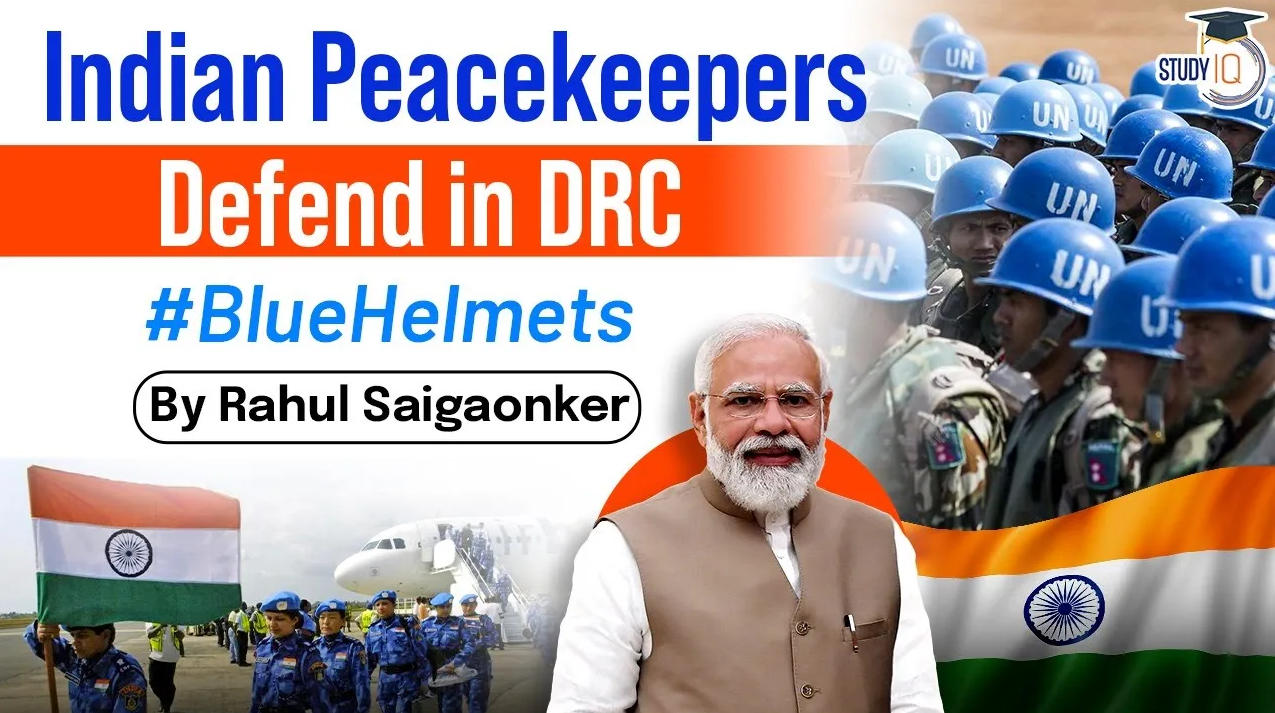Table of Contents
The News
- Indian Army troops along with personnel from some other nations fended off a militant attack in the Democratic Republic of Congo.
- Mouvement du 23 mars (M23) a militant group attacked MONUSCO and Armed Forces of the Democratic Republic of the Congo (FARDC) positions in the area of Shangi, North Kivu.
- Indian peacekeepers and blue Helmets from other nations, pushed back the attack.
The News
What is UN Peacekeeping?
- N. Peacekeeping mission is a joint effort between the Department of Peace Operations and the Department of Operational Support of Un which aims to assist host countries to transition from situations of conflict to peace.
- N. began its Peacekeeping efforts in 1948 when it deployed military observers to West Asia. The Peacekeeping mission’s role was to monitor the Armistice Agreement between Israel and its Arab neighbours. Formally, in 1956, the UN Emergency Force (UNEF) was established for UN peacekeeping operations.
- N. Peacekeepers provide security as well as political and peacebuilding support to conflict-ridden countries.
Can UN deploy peacekeepers unilaterally?
Not Really..!! (R2P since 2005)
- UN Peacekeeping missions are guided by three principles:
- Consent of the parties
- Impartiality
- Non-use of force except in self-defence and defence of the mandate
How to identify UN Peacekeepers?
- UN personnel are called Blue helmets.
- Blue Helmets are the military personnel of the U.N. that work alongside the U.N. Police and civilian colleagues to promote “stability, security, and peace processes”.
- The personnel get the name from the iconic blue helmets or berets they wear. All military personnel under Blue Helmets are members of their national armies first who are seconded to work under the U.N. command.
- Currently, there are more than 70,000 military personnel enlisted as Blue Helmets.
The Story of Blue Helmet
Responsibilities of Blue Helmets
- Protecting civilians and other U.N. personnel
- Monitoring disputed borders
- Observing peace processes in post-conflict areas
- Providing security in conflict zones
- Providing security during elections
- Assisting in-country military personnel with training and support
- Assisting ex-combatants in implementing the peace agreements
India & Peacekeeping
- Over 200,000 Indians have served in 49 U.N. Peacekeeping missions since 1948.
- Currently, 5,581 Indians are part of various U.N. Peacekeeping missions.
- In 2007, India became the first country to deploy an all-women contingent to a U.N. Peacekeeping mission.
- Over the last 70 years, more than 160 Indian military, police and civilian personnel have lost their lives while serving in UN peacekeeping. (Highest for any nation)
Why Peace Keeping in DRC?
- Peacekeeping in DRC has been prevalent since UN United Nations peacekeeping force was established by the UNSC resolutions 1279 (1999) and 1291 (2000) following the Second Congo War. The region is still a conflict zone due to ongoing Lord’s Resistance Army insurgency, Kivu conflicts, Ituri conflicts and Dongo conflict.
- United Nations Organisation Stabilisation Mission in the Democratic Republic of the Congo (MONUSCO) took over from a previous U.N. peacekeeping mission in the African country on July 1, 2010.
- MONUSCO aims to protect civilians, humanitarian personnel and human rights defenders from the imminent threat of physical violence and to support the government of the country in its stabilisation and peace consolidation efforts.
Latest Burning Issues | Free PDF


























 WhatsApp
WhatsApp